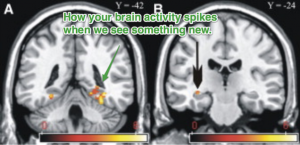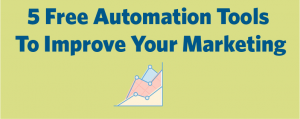Brain science and leadership make a winning team. After all, leadership is about getting the best out of others and using analytical and creative thinking to solve problems.
When you learn more about how your brain works and how to leverage it, you’ll save energy and time, and also become more productive.
Let’s look at some compelling ways neuroscience will help you improve your leadership skills.
Effective motivation
The argument about whether the carrot and the stick approach to motivation is better is put to rest thanks to neuroscience. We now know that positive motivation that creates rewards for good work has better long-term effects.
Creating competition within an organization alerts an employee’s survival brain and generates cortisol – the stress hormone. With higher stress levels, your team’s performance and morale will drop.
Instead, focus on offering social rewards in the form of recognition and praise. Studies on employee satisfaction show that only 21% of employees feel strongly valued at work. And 79% of people state ‘lack of appreciation’ as the reason for leaving a good job.
Learning about how to motivate yourself and others using neuroscience will make you better at keeping good people happy in your organization and reduce turnover.
Another way to apply neuroscience to motivation is to break large goals into objectives and tie these objectives to rewards. People respond well to short term challenges because they feel a surge of dopamine from achieving a goal fast.
When you’re working on longer projects with an end date that’s months or even a year away, it becomes harder feel motivated.
So, creating milestones and celebrating their achievement with monetary and social rewards will help you maintain a strong drive to reach long term goals.
Better decision making
Did you know that although your brain forms just 2% of your body’s weight it can consume as much as 20% of the body’s energy?
You have to create certain lifestyle changes to ensure that your brain functions at its best over time. Eating ‘brain food’ consisting of healthy fats and unprocessed food is essential for prime brain functioning.
It’s critical to drink several glasses of water a day, sleep for 7-9 hours every night, and exercise regularly. You also need to actively reduce stress by practicing mindfulness, meditation and other proven techniques for emotional regulation.
Here’s an interesting tip if you’re looking for funding and are planning to pitch to investors. Try to set up a meeting with investors early in the day or after lunch. These are times when they’re rested and have had a break from processing information.
When people’s brains are not taxed from solving problems, their more likely to think clearly and take decisions that work in your favor.
Detect Bias
Being unbiased during your hiring process is important to ensure that you’re selecting the best candidate for a job. When you’re not aware of internal biases, you may project positive characteristics on to people who aren’t suitable for a job but appear to be so because they seem to have some common interests with you. You may also reject good candidates because you’re unconsciously biased against them.
Neuroscience helps by informing you that biases are inevitable. We take mental shortcuts and judge situations, people, and objects to process them faster and make decisions. This is excellent when we have to cross a road, stay safe in a strange location, or look at what’s in the fridge to cook a meal. But it’s harmful when we use it to promote persons within a business or when we hire people.
It’s through being aware of our inherrant biases that we have the ability to counter them at critical points.
You can do this by creating recruitment processes that allow you to select candidates based on their qualifications. For example, you could set up an application format where the name and other personal details are hidden from you so that you focus on their experience and education. In this way, you can create checkpoints to make sure you making the best choices for your business.
Manage change in the organization
Businesses need to change to survive as technology and consumer behaviors shift over time. But implementing change within an organization is challenging work.
A major reason for this is because we’re wired to want safety and stability. Organizational changes such as restructuring, mergers and acquisitions, or even new workflows and tools trigger our primitive brains’ alarm system.
This generates feelings of resistance that appear as anger, depression, procrastination and more. Being aware of how our brains react to change will allow you to understand and empathize with employees.
You’ll be able to take several useful steps to mitigate your employees’ resistance to change:
- Involve employees early in the change process itself. Get feedback or input from them on the changes they would like to see. It’s also important to ask them how they perceive the changes taking place within the business
- Create a shared vision that resonates with the entire organization instead of simply telling them about the changes that will take place
- Listen to their concerns and address them. Timely and regular communication will ease their brain’s unease
You may not be able to immediately mitigate the ‘flight or fight’ feeling people get when faced with change, but when change is inevitable, being aware of how people respond is important. You’ll understand where their resistance is coming from and this will give you avenues to manage change better.
Conclusion
The mind and brain can form fascinating objects of study with practical applications in your business. You’ll be a better leader and a better decision-maker when you learn more about how the brain works and how to leverage it instead of working against its peculiarities.
Listen to podcasts, read books and articles to learn helpful tips about brain science. Soon, you’ll view the world differently and improve how you solve problem.
Business & Finance Articles on Business 2 Community
(43)






